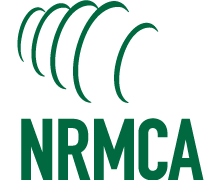
| Archive | nrmca.org | E-Store | Conferences & Events | Certifications | InFocus |
Transportation Bills Front and Center in Congress Last Tuesday, House Transportation and Infrastructure Committee (T&I) Chairman John Mica (R-7-FL) unveiled his revamped, much anticipated surface transportation authorization bill. The American Energy & Infrastructure Jobs Act (H.R. 7), in short, amounts to a 5-year, $260 billion transportation program. Shortly after its release, the House T&I Committee held a record, nearly 18-hour long markup of the bill which examined roughly 100 amendments. Following the markup, the highlights of the over 800-page bill include: a restructuring of the Highway Trust Fund (HTF), elimination and consolidation of dozens of highway programs, requirements to consider public-private partnerships, allowing greater use of tolls, more attention/resources for bridge deficiencies, funding for state infrastructure banks, increased funding for the TIFIA program, requirements for greater highway worker safety measures, a requirement to develop a national freight policy, and a study to determine the affects of increased truck weights. The funding for the new bill will come from a combination of HTF receipts, revenues from new oil and gas drilling leases, and a mystery $40 billion offset which still hasn’t been made public yet, although rumors suggest something having to do with "pensions" changes. Later this week, the House Rules Committee will determine the structure for floor debate on H.R. 7, including how many, if any, amendments will be offered. If everything goes according to plan, the full House should consider H.R. 7 the week of February 13. On the Senate side, H.R. 7 stands in very stark contrast to the Senate’s transportation proposal; MAP-21 (S. 1813), a two-year, $109 billion bill with a handful of policy changes. Although the Senate Environment and Public Works Committee has cleared the bill, the chamber is still waiting on the Senate Banking and Commerce committees to sign off on the mass transit portion, and the freight and safety provisions, respectively. The Senate Finance Committee met on Tuesday to finalize filling the bill’s funding gap. Neither a timeline for a final Senate bill nor a specific date/time for a full Senate vote on S. 1813 is currently known. Other than the obvious length and dollar differences between the two chambers’ bills, a host of items of contention are bound to drive a big wedge between the chambers, parties and outside groups. So far, the biggest thing both bills have in common is no earmarks. Because the situation in both chambers is fairly fluid right now, NRMCA will keep its feelers out for any news on possible amendments, including fly ash, cement MACT or XL pipeline language to either chamber’s bill. The next two weeks of consideration should paint a good picture of the winners and losers, and what passage of a comprehensive bill before March 31 really looks like. For more information, contact Kevin Walgenbach or Kerri Leininger at kwalgenbach@nrmca.org or kleininger@nrmca.org. |
|
|


